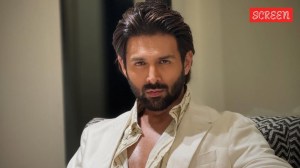R-word needs to apply to defence too
On September 30, 2000, the Task Force constituted by the Government to review higher defence management submitted its report to the Group of...

On September 30, 2000, the Task Force constituted by the Government to review higher defence management submitted its report to the Group of Ministers (GoM) comprising the ministers for Home, Finance, Defence and External Affairs. The GoM, despite having four of the busiest ministers, then proceeded to deliberate on these findings and those of three other task forces covering the spectrum of national security and, within just six months, made their own recommendations to the Prime Minister.
All of these pertaining to higher defence management, except one, were approved for implementation. There was one exception: the prime minister deferred a decision on the suggestion to create the post of a Chief of Defence Staff (CDS). Two years down the line, it is time to take stock of how far we have come and how far we have still to go.
First, the good news. A unified theatre command has been constituted in the Andaman and Nicobar Islands. An integrated defence staff, comprising senior officers of all three services as well as representatives from Finance, External Affairs and Defence organisations, has also been set up in New Delhi. A Defence Intelligence Agency has been created and even though there continues to be some avoidable duplication of work regarding the intelligence directorates of the three services, there is greater cohesiveness in analyses and assessments. Hopefully, this interface is also available with non-defence intelligence agencies, something found sadly lacking during the Kargil conflict.
The Chief of the Integrated Staff has the responsibility to coordinate, oversee and control planning and force development of the armed forces and, even more important, to prioritise inter service demands. To what extent this function is actually being performed is debatable since he continues to be answerable to the same troika of three service chiefs.
Another piece of good news is that the armed forces have been delegated several administrative and financial powers which now enable the service chiefs to manage the everyday functioning of their service quite independently, and allows the Defence ministry to concentrate on policy issues. The revenue budget of the armed forces should be delegated almost entirely, and one hopes that quick moves will be made towards the achievement of this goal.
Another positive step has been the setting up of a Defence Procurement Board to streamline capital procurements. This brings us to the bad news. We still do not have a National Security Strategy or Directive which would lead to formulation of defence objectives. Without these critical ingredients, coherent defence planning is just not possible. The Strategic Command is yet to be constituted despite the Defence Minister’s assurances. The GoM had also found visible dysfunction between technological planning and development because of poor interface between Defence Research and Development Organisation (DRDO), production agencies (PAs) and the users and had recommended that existing methods and structures be reviewed by a committee chaired by the Secretary (Defence Production). There was a need for the work of R&D laboratories to be synergised with that of the PAs even as the DRDO concentrated on long term core technologies. This has yet to happen.
A group led by the Cabinet Secretary was to explore ways and means of enabling lateral induction of armed forces personnel into the paramilitary and other groups. This study too has made little progress.
Similarly, the recommendation to set up a National Defence University on the lines of those in the USA and China is also not making headway despite concrete proposals made by a specially constituted team. Another recommendation gone unattended is for appointments to the posts of Commanders-in-Chief in the three Services to be cleared by the Chiefs of Staff Committee. These continue to be handled by each chief independently.
Also unimplemented is the decision to revamp the organisation of the Director General Quality Assurance (DGQA) and to transfer its indigenisation function to the PAs and the Services. This is unfortunate because two major reasons hampering modernisation are unsatisfactory an DRDO-PA interface and poor performance of the DGQA.
But the most serious holdback in defence organisational reforms has been the Government’s inability to position a Chief of Defence Staff. It is not known what is inhibiting the creation of this post but in its absence, there is no way the integrated defence staff can perform to expectation. Anyone even remotely familiar with the management system in the services will know that without an authoritative and accountable head, no agency will function coherently.
The GoM had tellingly acknowledged in its report that the COSC’s functioning had ‘‘revealed serious weaknesses in its ability to provide single point military advice to the Government or resolve substantive inter Service doctrinal, policy planning and operational issues.’’ There could be no more severe indictment of the system. This inadequacy will affect the ability of the military structure to perform optimally.
The GoM had concluded that any plan of action could be only as good as its implementation. One gets the feeling this message has begun to lose focus. Just as in disinvestment, defence reforms seem to be getting stuck and are likely to go off track. This would be a tragedy of great consequence. Economic dysfunction can have many penalties, but security incoherence can have much more serious results.
(The author is a former Director General, Defence Planning Staff)



- 01
- 02
- 03
- 04
- 05




























